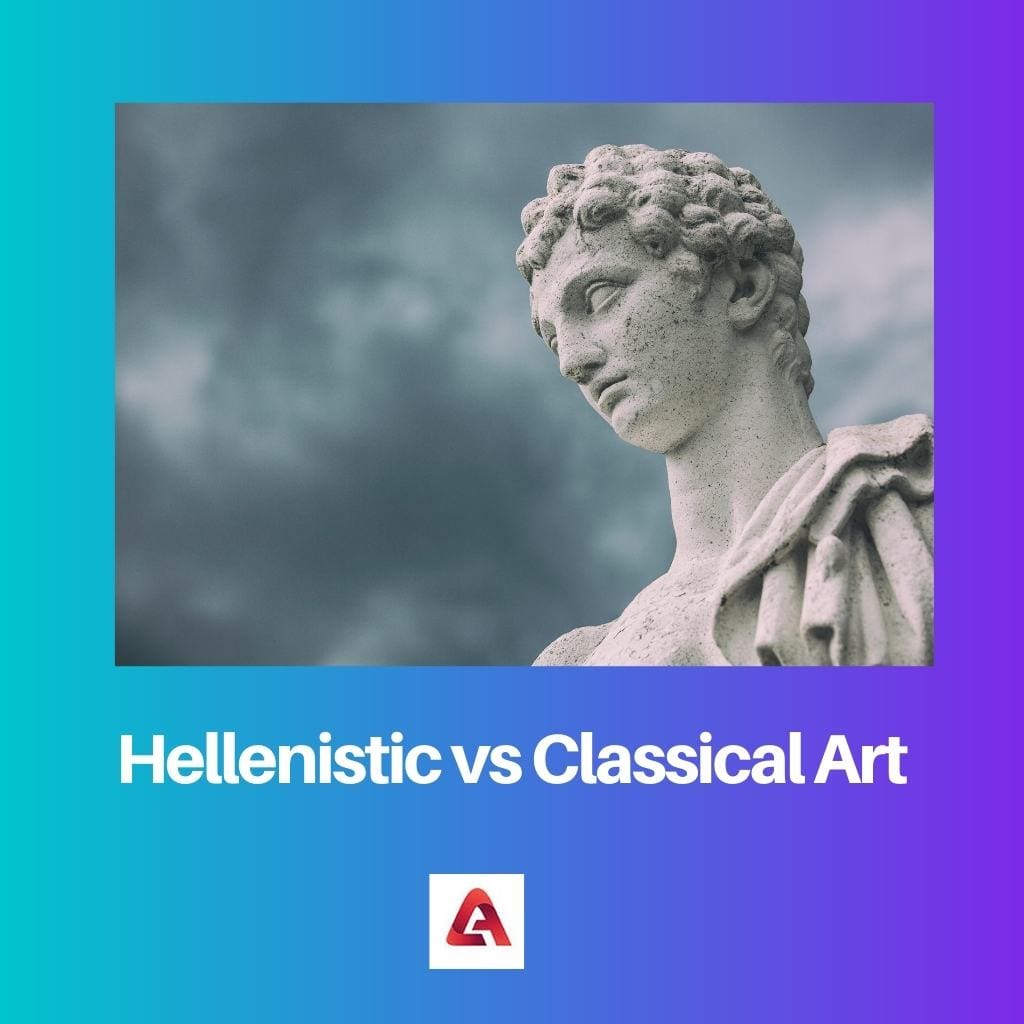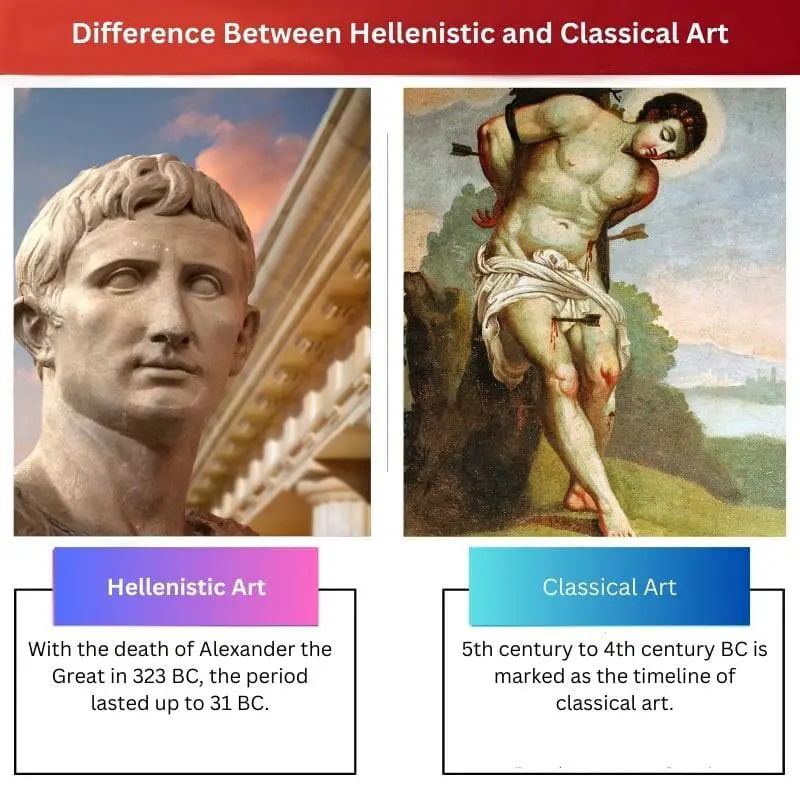Art is a form of expression of curating ideas and glorifying a civilization. It immortalizes the then time and takes a viewer back to experience the written texts in history books.
Art affects society and the future and gets affected by time. Art is also a form of communication that facilitates to educate about the history and significance of certain things.
It can influence minds and thoughts; a written manuscript or text is one thing, but how life would have been lived comes naturally through sculptures, paintings, and artefacts.
Ancient Greek art is known for its elaborate and well-thought sculptures of human anatomy. They are the only surviving art from Greece apart from some pottery.
The Greek sculpting saw tremendous change, moving from one period to another. The artists became more skilled and expressive, which was reflected in their artworks.
The two significant periods in Greek art history are the Classical and Hellenistic periods; both periods registered their names in the textbooks for their perfection in depicting proportionate, idealized figures.
Key Takeaways
- Classical art refers to the artistic styles and techniques used in ancient Greece during the 5th and 4th centuries BC. In contrast, Hellenistic art encompasses the death of Alexander the Great in 323 BC to the establishment of the Roman Empire in 31 BC.
- Classical art emphasizes the idealization of the human form, a sense of proportion, and a focus on harmony and balance. In contrast, Hellenistic art is characterized by a greater degree of realism, emotion, and dramatic expression.
- While classical art depicts idealized figures engaged in heroic or mythological scenes, Hellenistic art includes a broader range of subjects, such as ordinary people, children, and animals. It explores themes like suffering, death, and individualism.
Hellenistic vs Classical Art
Hellenistic art emerged in the 4th century BC and continued until the 1st century BC, following the Classical period, and is known for its dramatic realism and emotional expression. Classical art is characterized by depicted idealized human forms, showcasing a sense of harmony and balance.

Comparison Table
| Parameter of Comparison | Hellenistic Art | Classical Art |
|---|---|---|
| Period | With the death of Alexander the Great in 323 BC, the period lasted up to 31 BC. | 5th century to 4th century BC is marked as the timeline of classical art. |
| Style | Freedom of expression, human emotions like anger, agony, sorrow, and humour we’re portrayed. | Rules and conventions are considered; the sculptor focuses on creating idealized static figures. |
| Body | Body movements and the details like the bulging of muscles can be noticed with dynamic poses. | The body showed no motion or dynamics at all. |
| Face | The face was realistic, exhibiting emotions. | The sculptures in the period are expressionless. |
| Art Subject | The art subject could be anyone in Hellenistic times, poor, rich, or young. It showed more human figures with a realistic approach. | Subjects do not appear as humans but as gods. They are of great importance. |
What is Hellenistic Art?
The Hellenistic art period began in 323, after the death of Alexander the Great, it is an evolved version of the concepts of the classical period, and it follows the period with modernity and realism.
The Hellenistic art style portrayed human anatomy, but with a realistic approach, freedom of expression could be noticed, which emerged from how societal notions evolved at that time. Emotions like happiness, anger, agony, and sadness could be noticed in the figures from head to toe.
The body movements are evident in each sculpture, the sculptor worked on portraying fine details, and the expansion and contraction of muscles were well executed with torsos twisted and the formation of biceps or calf muscles.
With the expressive faces, the art subjects started being anyone which was not the case during the Classical art period. Works like Venus de Milo and the Winged Victory of Samothrace, later discovered and dated back to the period, show the details of drapes and body of work.

What is Classical Art?
The classical art period began in the 5th century after the end of the Archaic period, which is important in Greek art history.
Classical art began with the idea to study the anatomy of human forms; the early Classical art period, also popularly called the Severe style, which can be seen in the Temple of God Zeus, the drapes were plain. The period saw an evolution in itself from Severe style to High Classical.
The figures are known for their proportion, balance, and harmony.
The sculptures were static, with little or no motion; the bodies were mostly rigid. At that time, more idealized figures and important personalities were represented; the art subjects couldn’t be common people.
Emotionless figures with no expression in the eyes or face can be noticed in almost every figure. The Discuss Thrower is one of the examples of this period.

Main Differences Between Hellenistic and Classical Art
- The main difference between Hellenistic and Classical Art is that the Hellenistic period which came much later than the Classical period shows the evolution in style and details; the human anatomy is more well-read and portrayed in the Hellenistic period than in the Classical times.
- The Hellenistic art period started in 323 BC and ended around 31 BC, whereas the Classical art period started in the 5th century BC.
- The Hellenistic art style was expressive, maybe because the art was much evolved, bodily movements and with that, the expansion and contraction of muscles can be noticed; however, the classical period had static, idealized figures that barely felt humane but godly.
- The faces in the figures of the Hellenistic period were human-like and expressive, exhibiting emotions like happiness, sorrow, and agony, but the Classical figures show expressionless faces.
- The art subjects in the Hellenistic art period could be anyone, from any class, rich-poor. In contrast, godly and important figures were portrayed in the Classical period.

- https://www.jstor.org/stable/505328
- https://www.cambridge.org/core/journals/classical-quarterly/article/image-and-ritual-reflections-on-the-religious-appreciation-of-classical-art/A0571E4E2CDD44F2DA9F8D24E4A0BB35

Sculptures from the Classical and Hellenistic periods are indeed awe-inspiring. The stark differences in style and art subjects show the impact of historical and societal changes.
There are some strong arguments made about the artistic styles and techniques used in different periods, however, I feel the post could have engaged more with the religious and cultural influences on the two styles of art.
Clearly, the article provides an in-depth comparison of classical and Hellenistic art. The explanation backed by the historical context is very enlightening.
Art is indeed a profound way to preserve history and society. The evolution of Greek art, as described, is fascinating and signifies the change in culture and ideals.
The focus on realism and idealism in Hellenistic and Classical art respectively is crucial in understanding the evolution of ancient art. The narrative style of the post is informative and captivating.
The humor and satire in the sculptures of Hellenistic art, as discussed in the post, reflect the societal changes and offer an all-encompassing experience through art.
The intricate details about the artistic periods are certainly enlightening. However, the emphasis on style and techniques largely overlooks the sociocultural and historical influences on art.
The informative nature of the post, although captivating, lacks a touch of humor and wit, characteristics clearly prevalent in Hellenistic art.
Despite the author’s attempts to compare classical and Hellenistic art, a more analytical approach would have enriched the text.
Art provides a beautiful insight into the ancient world and invokes a sense of human achievement through sculptures and paintings. The comparison table is particularly helpful.